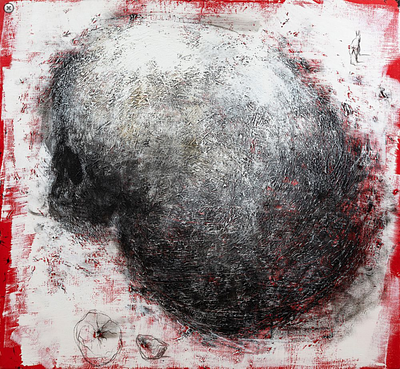LUIS FEITO LÓPEZ (Madrid, 1929-2021). "1194", 1980. Oil on panel. Signed, dated and titled on the back. Size: 100 x 124 cm.
Lot 129
About Seller
Setdart Auction House
Carrer Aragó 346
Barcelona
Spain
Setdart Subastas was born in 2004 and is currently the first online art auction in Spain with solidity, prestige and reliability guaranteed by our more than 60,000 users. Setdart has a young, dynamic and enterprising team ready to successfully manage the purchase and sale of art works through custom...Read more
Estimate:
EUR€6,500 - EUR€7,000
$6,701.03 - $7,216.49
Absentee vs Live bid
Two ways to bid:
- Leave a max absentee bid and the platform will bid on your behalf up to your maximum bid during the live auction.
- Bid live during the auction and your bids will be submitted real-time to the auctioneer.
Bid Increments
| Price | Bid Increment |
|---|---|
| EUR€0 | EUR€10 |
| EUR€200 | EUR€25 |
| EUR€500 | EUR€50 |
| EUR€1,000 | EUR€100 |
| EUR€3,000 | EUR€200 |
| EUR€5,000 | EUR€500 |
| EUR€10,000 | EUR€1,000 |
| EUR€20,000 | EUR€2,000 |
| EUR€50,000 | EUR€5,000 |
About Auction
By Setdart Auction House
Oct 19, 2021
Set Reminder
2021-10-19 08:00:00
2021-10-19 08:00:00
America/New_York
Bidsquare
Bidsquare : CONTEMPORARY ART
https://www.bidsquare.com/auctions/setdart-auction-house/contemporary-art-7701
Setdart Auction House sofia@setdart.com
Setdart Auction House sofia@setdart.com
- Lot Description
LUIS FEITO LÓPEZ (Madrid, 1929-2021). "1194", 1980. Oil on panel. Signed, dated and titled on the back. Size: 100 x 124 cm. "1194" reflects a key moment in Luis Feito's career, in which the artist extended his research on the forms, continuing the clear tendency towards simplification already started in the 70s. It shows three broad planes of colour (black, violet and grey), which compete in expressiveness and intensity, and corresponds to the stage in which Feito began to reduce all the elements of the composition to the essential, without paying attention to anything that could be understood as superfluous. As can be seen in this same table, most of Feito's works are untitled and can therefore be recognised by the numbering assigned to them. Born and trained in Madrid, he was one of the founding members of the El Paso group. In 1954 he held his first solo exhibition of non-figurative works at the Buchholz gallery in Madrid. From then on Feito exhibited regularly in the most important cities in the world, such as Paris, Milan, New York, Helsinki, Tokyo and Rome. Appointed professor at the San Fernando School of Fine Arts in 1954, two years later he left teaching and went to Paris on a scholarship to study the avant-garde movements in force. During this period he was influenced by automatism and matter painting. In 1962 he became a founding member of the El Paso group, with which he had lost contact during his years in Paris. His first works were figurative painting, followed by a phase in which he experimented with cubism and finally moved fully into abstraction. At first he only used black, ochre and white colours, but when he discovered the potential of light he began to use more vivid colours and smooth planes. He evolved until he used red as a counterpoint in his compositions (from 1962) and, in general, more intense colours. In his abstract phase, which includes the 1970s, Feito showed a clear tendency towards simplification, with the circle predominating in his compositions as a geometric form. Possibly, the influence of Japanese art can be seen in his preference for large bands of black. His awards include his appointment as an Officer of the Order of Arts and Letters of France in 1985. In 1998 he was awarded the Gold Medal of Fine Arts in Madrid, and was made a Full Member of the San Fernando Royal Academy of Fine Arts. In 2000 he was awarded the Prize of the Spanish Association of Art Critics at the Estampa Salon, in 2002 the AECA Grand Prize for the best international artist at ARCO, in 2003 the prize for the most important artist at the Osaka Art Fair (Japan), in 2004 the Prize for the Culture of Plastic Arts of the Community of Madrid, in 2005 the Francisco Tomás Prieto Prize of the Fábrica Nacional de Moneda y Timbre, and in 2008 the Jorge Alió Foundation Prize and the Grand Prize for Spanish Contemporary Art CESMAI. Luis Feito is represented in the most important museums all over the world, including the Gallery of Modern Art in Rome, the Guggenheim, the MoMA and the Chase Manhattan Bank in New York, the Museums of Modern Art in Tokyo, Paris, Rio de Janeiro and Montreal, the Lissone in Italy, etc.
- Shipping Info
-
In-house shipping available. Please inquire at admin@setdart.com.
-
- Buyer's Premium



 EUR
EUR CAD
CAD AUD
AUD GBP
GBP MXN
MXN HKD
HKD CNY
CNY MYR
MYR SEK
SEK SGD
SGD CHF
CHF THB
THB














